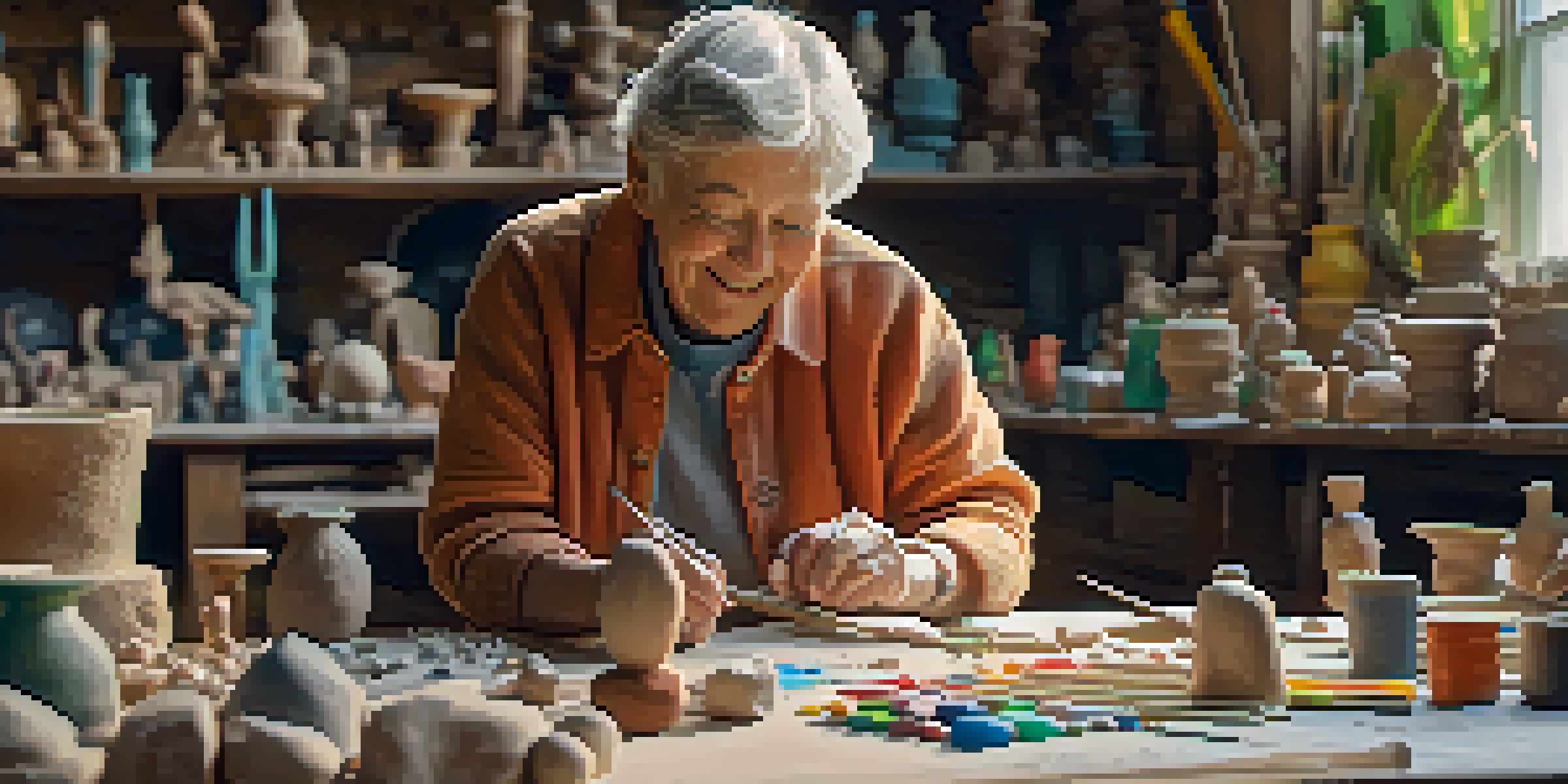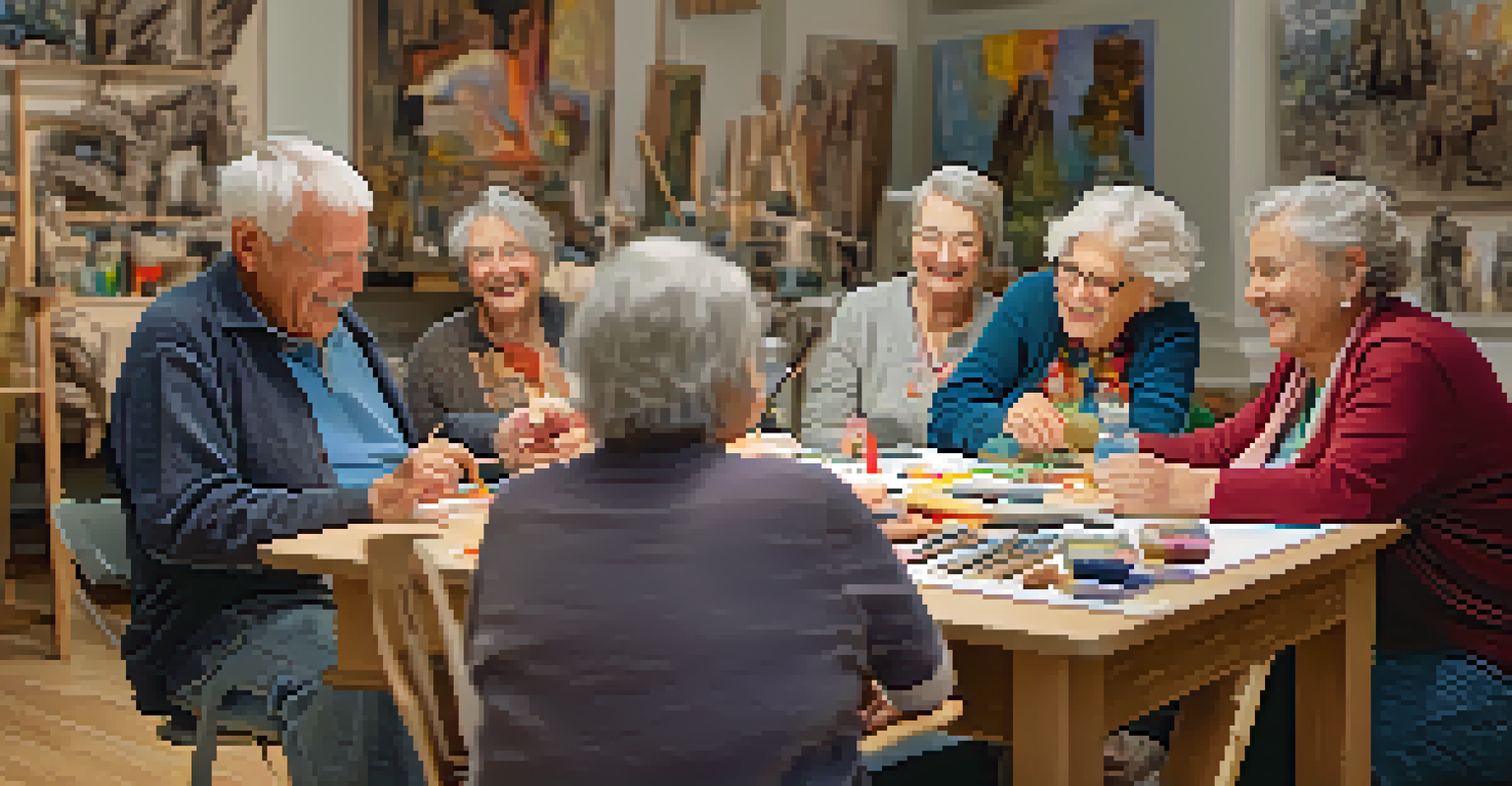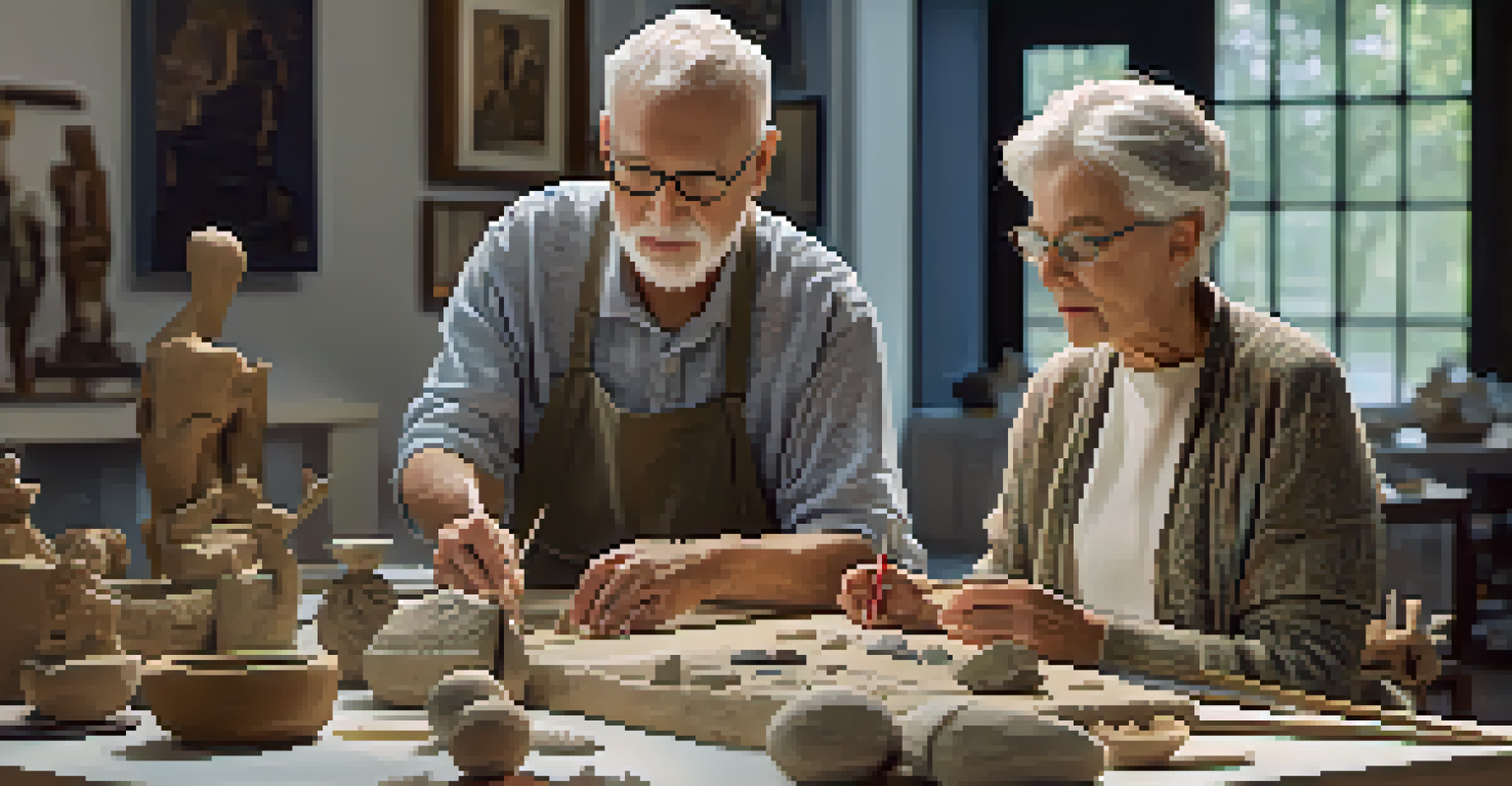The Therapeutic Effects of Sculpture for Older Adults

Understanding Sculpture as a Therapeutic Tool
Sculpture, as a form of three-dimensional art, offers a unique way to engage older adults creatively. Unlike painting or drawing, sculpture allows individuals to use their hands and manipulate materials, which can be both stimulating and satisfying. This tactile experience fosters a connection to the art-making process, making it a powerful therapeutic tool for emotional expression.
Art is not what you see, but what you make others see.
Engaging with sculpture can help older adults express feelings and thoughts that may be hard to articulate verbally. As they mold and shape different materials, they may find themselves processing memories or emotions related to their life experiences. This form of expression can be particularly beneficial for those dealing with cognitive decline, as it provides a non-verbal outlet for communication.
Moreover, the act of creating something tangible can instill a sense of accomplishment and boost self-esteem among older adults. Whether they are crafting a small figurine or a larger piece, the finished product serves as a reminder of their capabilities, reinforcing their sense of identity and value.
Enhancing Cognitive Function Through Sculpture
Working with sculpture can significantly enhance cognitive function in older adults. The process of planning, designing, and executing a sculpture requires various mental faculties, including problem-solving and critical thinking. Each step, from conceptualization to the final touch, engages the brain in ways that are not only enjoyable but also beneficial for cognitive health.

Research shows that engaging in creative activities can help delay the onset of cognitive decline. When older adults participate in sculpting, they are exercising their brains, which can lead to improved memory and attention. This mental stimulation is crucial for maintaining cognitive agility as they age, making sculpture not just an artistic endeavor, but a vital exercise for the mind.
Sculpture Boosts Emotional Expression
Engaging with sculpture allows older adults to express complex feelings and memories non-verbally, offering a therapeutic outlet for communication.
Additionally, sculpting encourages mindfulness, as it requires focus and concentration on the task at hand. This present-moment awareness can help alleviate anxiety and stress, which are common issues among older adults. Through mindful engagement with their materials, they can enjoy a meditative state that promotes mental clarity and emotional calm.
Physical Benefits of Sculpture for Seniors
Sculpting is not only a mental workout; it also provides numerous physical benefits for older adults. The act of molding clay or shaping other materials involves using different muscle groups, promoting fine motor skills and hand-eye coordination. This physical engagement helps maintain dexterity, which is essential for everyday tasks and overall quality of life.
Art enables us to find ourselves and lose ourselves at the same time.
Moreover, the repetitive motions involved in sculpting can also be therapeutic for those with arthritis or other joint issues. Gentle manipulation of materials can serve as a form of physical therapy, easing stiffness and improving flexibility over time. It’s a practical way for older adults to integrate movement into their daily routines without the pressure of traditional exercise.
Participating in sculpture can also improve overall body awareness. As individuals become more attuned to their physical capabilities, they may experience increased confidence in their movements. This heightened awareness contributes to better balance and coordination, ultimately reducing the risk of falls—a common concern for older adults.
Fostering Social Connections Through Sculpture
Sculpture can also serve as a wonderful social activity, bringing older adults together in a shared creative space. Group sculpting sessions encourage interaction and collaboration, helping to combat feelings of loneliness and isolation that many seniors face. These social connections are crucial for emotional well-being, enhancing their quality of life significantly.
In a group setting, older adults can share ideas, techniques, and experiences while working on their sculptures. This collaborative atmosphere fosters a sense of belonging and community, allowing individuals to connect over common interests. Such interactions can lead to lasting friendships and a support network that benefits their mental health.
Enhances Cognitive Functioning
The creative process of sculpting stimulates cognitive functions, improving memory, attention, and critical thinking skills in older adults.
Additionally, participating in community art projects or exhibitions can further enhance social engagement. Showcasing their work provides a platform for older adults to share their creativity with others, boosting their confidence and providing a sense of pride in their accomplishments. It’s a beautiful way for them to feel valued and recognized within their community.
Art Therapy and Sculpture: A Powerful Combination
Art therapy is a recognized form of therapy that utilizes creative processes to improve mental health, and sculpture fits perfectly within this framework. Certified art therapists can guide older adults in using sculpture as a way to explore emotions and experiences, offering a structured approach to artistic expression. This therapeutic relationship can foster healing and self-discovery.
Through guided sculpting sessions, individuals can delve deeper into their emotions and uncover underlying issues related to grief, loss, or trauma. The therapist’s support can help them navigate these feelings in a safe environment, enabling personal growth and emotional resilience. The act of sculpting becomes a therapeutic journey, rather than just a creative pastime.
Moreover, incorporating sculpture into art therapy can lead to transformative breakthroughs. As older adults manipulate materials, they may experience catharsis—an emotional release that promotes healing. This process can be incredibly empowering, helping them to reclaim their narratives and foster a sense of hope and renewal.
Cultivating Mindfulness and Presence Through Sculpture
Sculpture provides a unique opportunity for older adults to practice mindfulness, a mental state that emphasizes being present in the moment. As they engage in the tactile experience of sculpting, they can let go of distractions and worries, immersing themselves in the creative process. This focused attention can lead to moments of tranquility and clarity.
Mindfulness through sculpture allows older adults to become more aware of their thoughts and feelings without judgment. This practice can help reduce anxiety and stress, creating a more peaceful mental state. The awareness cultivated during sculpting can also spill over into their daily lives, enhancing their overall well-being.
Fosters Social Connections
Group sculpting activities create opportunities for social interaction, reducing feelings of loneliness and fostering a sense of community among seniors.
In addition, the repetitive motions involved in sculpting can have a meditative quality. As older adults work the clay or shape their materials, they may enter a flow state, where time seems to stand still. This experience of flow is not only enjoyable but also beneficial for mental health, as it promotes relaxation and a sense of fulfillment.
Conclusion: Embracing Sculpture for Holistic Well-Being
In conclusion, the therapeutic effects of sculpture for older adults are multi-faceted, touching on physical, cognitive, emotional, and social well-being. By engaging in this creative practice, seniors can experience a significant boost in their quality of life, fostering connections with themselves and others. The benefits extend beyond the art itself, promoting a holistic approach to wellness.
As we recognize the importance of creative outlets for aging populations, it becomes essential to integrate activities like sculpture into community programs and senior care settings. Providing access to sculpting resources and workshops can empower older adults to explore their creativity, ultimately enhancing their mental and emotional health.

By embracing sculpture as a therapeutic tool, we can help older adults navigate the challenges of aging with grace and resilience. It’s a celebration of creativity, connection, and self-discovery, reminding us all of the joy that art can bring at any age.